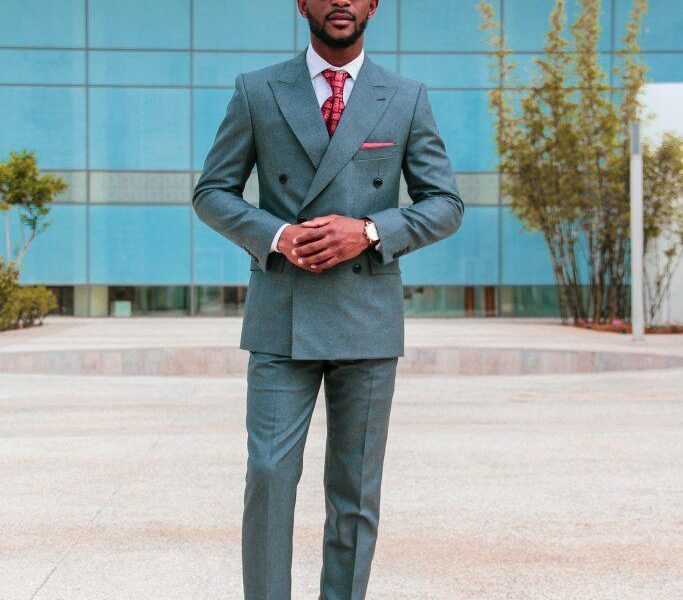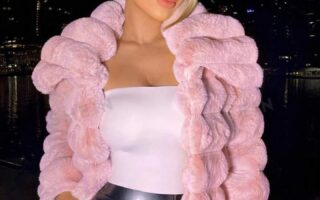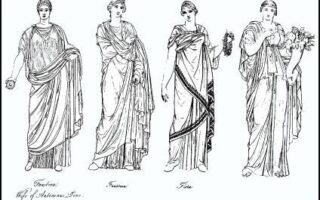In a world where personal expression and tradition intersect, the realm of Western formal dress for women stands as a canvas of elegance and sophistication. From the classic grace of an evening gown to the tailored precision of a chic suit, the choices available offer a melange of styles that reflect both individual identity and societal norms. As gatherings and celebrations call for attire that elevates the mundane to the extraordinary, understanding the nuances of Western formal dress becomes essential. This article delves into the art of dressing elegantly, exploring the rich history, evolving trends, and key considerations that define the landscape of formal wear for women today. Whether you are preparing for a gala, a wedding, or a prestigious event, join us as we unravel the timeless allure of Western formal attire and discover how to embody confidence and poise through every stitch and seam.
Table of Contents
- Embracing Elegance: Understanding the Fundamentals of Western Formal Dress for Women
- Key Fabrics and Cuts: Choosing the Right Materials for Formal Occasions
- Accessorizing with Intent: Elevating Your Formal Look with the Perfect Details
- Cultural Considerations: Navigating Western Formal Dress Codes Across Different Contexts
- Q&A
- To Conclude
Embracing Elegance: Understanding the Fundamentals of Western Formal Dress for Women
Western formal dress for women embodies a rich tapestry of tradition, sophistication, and personal expression. At its core, this attire often reflects a balance between timeless elegance and contemporary trends. Key pieces typically include:
- The Little Black Dress (LBD): A classic choice that can be accessorized in countless ways.
- Evening Gowns: Flowing silhouettes adorned with embellishments, perfect for formal galas.
- Tailored Suits: A powerful alternative that exudes professionalism and poise.
- Midi and Maxi Dresses: Versatile options that can transition from day to night with ease.
Understanding the nuances of fabric choice and color palette can elevate a formal ensemble. Luxurious materials such as silk, satin, and chiffon often dominate the scene, while colors can speak volumes about the wearer’s personality and the occasion. For instance, a table representing a few classic color choices might include:
| Color | Meaning |
|---|---|
| Black | Elegance & Formality |
| Red | Confidence & Passion |
| Blue | Trust & Calmness |
| Pastels | Softness & Femininity |
Key Fabrics and Cuts: Choosing the Right Materials for Formal Occasions
Selecting the ideal fabric is crucial for achieving the perfect look at any formal event. Silk is a classic choice, known for its luxurious sheen and soft drape, making it an excellent option for evening dresses and gowns. Chiffon offers a lighter, flowing alternative, perfect for layering and creating ethereal silhouettes. Other notable fabrics include Satin, which provides a smooth, glossy finish, and Tulle, often used for skirts to give volume without heaviness. Each of these materials carries its unique personality, allowing you to express your style while keeping comfort at the forefront.
When it comes to cuts, the way a garment is tailored can make all the difference. Here are some timeless styles to consider for formal occasions:
- A-Line: This universally flattering cut is fitted at the waist and flares out gently, offering both elegance and comfort.
- Mermaid: For those looking to make a bold statement, this figure-hugging silhouette accentuates curves and creates a stunning hourglass shape.
- Ballgown: With a voluminous skirt and fitted bodice, it exudes a fairytale vibe, perfect for grand events.
- Shift: Simple yet sophisticated, the shift dress offers a relaxed fit that is easy to move in, ideal for more laid-back formal gatherings.
Accessorizing with Intent: Elevating Your Formal Look with the Perfect Details
When it comes to formal attire, the right accessories can transform a simple outfit into a statement of elegance and personality. Consider incorporating metallic accents—such as a sleek clutch or sparkling jewelry—that can add a touch of glamour without overshadowing your ensemble. Layering delicate necklaces or opting for eye-catching earrings can frame your face beautifully, enhancing your overall appearance. Moreover, don’t overlook the power of a well-chosen belt; a structured belt can cinch a dress, creating a flattering silhouette that highlights your waist.
In addition to jewelry, the choice of footwear can significantly impact your formal look. Classic stilettos or chic block heels can add both height and sophistication, but comfort should also be a priority for those long events. If you prefer a more modern aesthetic, consider ankle boots paired with tailored trousers for an unexpected twist. a tastefully styled hair accessory, like an embellished hairpin or a minimalist headband, can elevate your hairstyle and complement your outfit seamlessly. The goal is to blend style with substance, creating a polished look that reflects your personal taste.
Cultural Considerations: Navigating Western Formal Dress Codes Across Different Contexts
Understanding the nuances of Western formal dress codes is essential, especially for women navigating various social and professional environments. There are key elements that define appropriate attire, which can vary widely depending on the context. Common occasions include corporate events, weddings, and galas, each requiring a thoughtful approach to ensure you present yourself in a manner that respects the customs of the setting. Consider the following elements:
- Attire Type: Different events may require specific clothing types, such as evening gowns for galas or tailored suits for business meetings.
- Colors and Patterns: While classic black or navy is often safe, understanding the cultural significance of colors in an event’s context can enhance your outfit choice.
- Accessories: Accessories play a crucial role. Subtle jewelry may be suitable for formal business settings, while more extravagant pieces might be welcomed at celebratory events.
Be attentive to the local customs that influence dress norms, as interpretations of formal wear can differ even among Western cultures. In certain locales, a cocktail dress may suffice for a semi-formal event, while others might lean toward more traditional attire such as long dresses or elegant two-piece suits. Here’s a simple breakdown to illustrate these variations:
| Event Type | Suggested Attire | Cultural Note |
|---|---|---|
| Corporate Meeting | Tailored Suit or Blazer with Dress Pants | Emphasis on professionalism, often with muted colors. |
| Wedding | Formal Dress or Chic Jumpsuit | Styles may reflect the couple’s preferences; follow their lead. |
| Charity Gala | Evening Gown or Statement Cocktail Dress | Opportunities for more creativity, consider the theme. |
Q&A
Q&A: Exploring Western Formal Dress for Women
Q: What defines western formal dress for women?
A: Western formal dress for women typically encompasses a range of elegant attire, including evening gowns, cocktail dresses, and sophisticated suits. Key features often include fine fabrics such as silk, satin, or chiffon, intricate detailing like lace or beading, and a streamlined silhouette that emphasizes elegance and poise.
Q: Are there specific occasions where western formal attire is required?
A: Indeed, western formal dress is usually reserved for special occasions such as weddings, gala dinners, formal parties, and significant cultural events. Each of these occasions may have its preferences and nuances, but the common thread is a level of sophistication and decorum.
Q: How do I choose the right fabric for formal dress?
A: Choosing the right fabric hinges on the event’s formality, season, and personal comfort. For summer events, lightweight fabrics like chiffon or lace work well, while cooler months might call for richer fabrics such as velvet or heavier silk. Moreover, consider the texture and drape of the material—these elements contribute significantly to the overall aesthetics and fit of the dress.
Q: Can accessories influence a formal dress?
A: Absolutely! Accessories can elevate a formal outfit from lovely to breathtaking. Opt for statement jewelry, elegant clutches, and stylish heels to enhance your look. However, balance is key; choose pieces that complement rather than overpower your dress, creating a harmonious ensemble.
Q: Are there any color trends in formal dresses for women?
A: Color trends in western formal wear often reflect seasonal palettes, current fashion influences, and even cultural significance. While classic shades like black and navy remain timeless, bolder hues such as jewel tones and pastels are increasingly popular. Pantone’s Color of the Year can also provide inspiration, as it influences many designers’ collections.
Q: What about fit and tailoring? Is it important?
A: Fit and tailoring are paramount in formal wear. A well-fitted dress flatters the body shape and enhances confidence. Investing in tailoring can transform an off-the-rack piece into a custom masterpiece, ensuring that every seam and silhouette aligns perfectly with your unique form.
Q: Can I wear pants as formal attire?
A: Absolutely! Formal pantsuits or tailored separates are stylish and increasingly accepted in western formal dress codes. Chic palazzo pants paired with an embellished top or a well-fitted blazer can equally convey sophistication, making them an excellent alternative to traditional dresses.
Q: How can I make a statement while staying within formal dress codes?
A: Making a statement while adhering to formal dress codes can be achieved through unique cuts, unexpected color combinations, or minimalist designs that incorporate striking elements like asymmetry or bold shoulders. Ultimately, personal style shines through in how you carry your outfit—confidence is your best accessory.
Q: Are there any cultural considerations to keep in mind?
A: Yes, cultural context can greatly influence expectations for formal attire. It is essential to understand the specific customs and dress codes associated with an event, particularly if it involves traditions or heritage. Respecting these nuances not only shows appreciation but also ensures you feel comfortable and confident in your attire.
Q: How can I maintain and care for my formal dresses?
A: Proper care ensures that your formal dresses remain stunning for years to come. Always check the care labels; many delicate fabrics require gentle washing or dry cleaning. Store dresses in breathable garment bags to prevent dust accumulation, and avoid hanging them too tightly to maintain their shape. Regularly inspect for any minor repairs to keep them in pristine condition.
Feel free to explore the world of western formal dress for women further—each garment tells a story, and each occasion allows for self-expression through fashion!
To Conclude
As we come to a close on our exploration of Western formal dress for women, it’s evident that this sartorial tradition is as diverse as it is elegant. From the classic little black dress to the opulent gowns that grace prestigious events, each style offers a unique canvas for personal expression. The power of formal dress lies not only in its ability to adhere to tradition but also in its capacity to evolve, reflecting the dynamic roles women play in society today.
As you navigate your own wardrobe choices for those significant occasions, remember that the right dress can not only enhance your appearance but also boost your confidence and convey your unique personality. Whether you opt for something timeless or embrace modern trends, let your choice of formal wear be a celebration of your individuality. In a world where fashion is constantly shifting, the art of Western formal attire invites you to define your style on your own terms. Embrace the journey, and may your next formal occasion be a showcase of your distinctive flair and grace.



